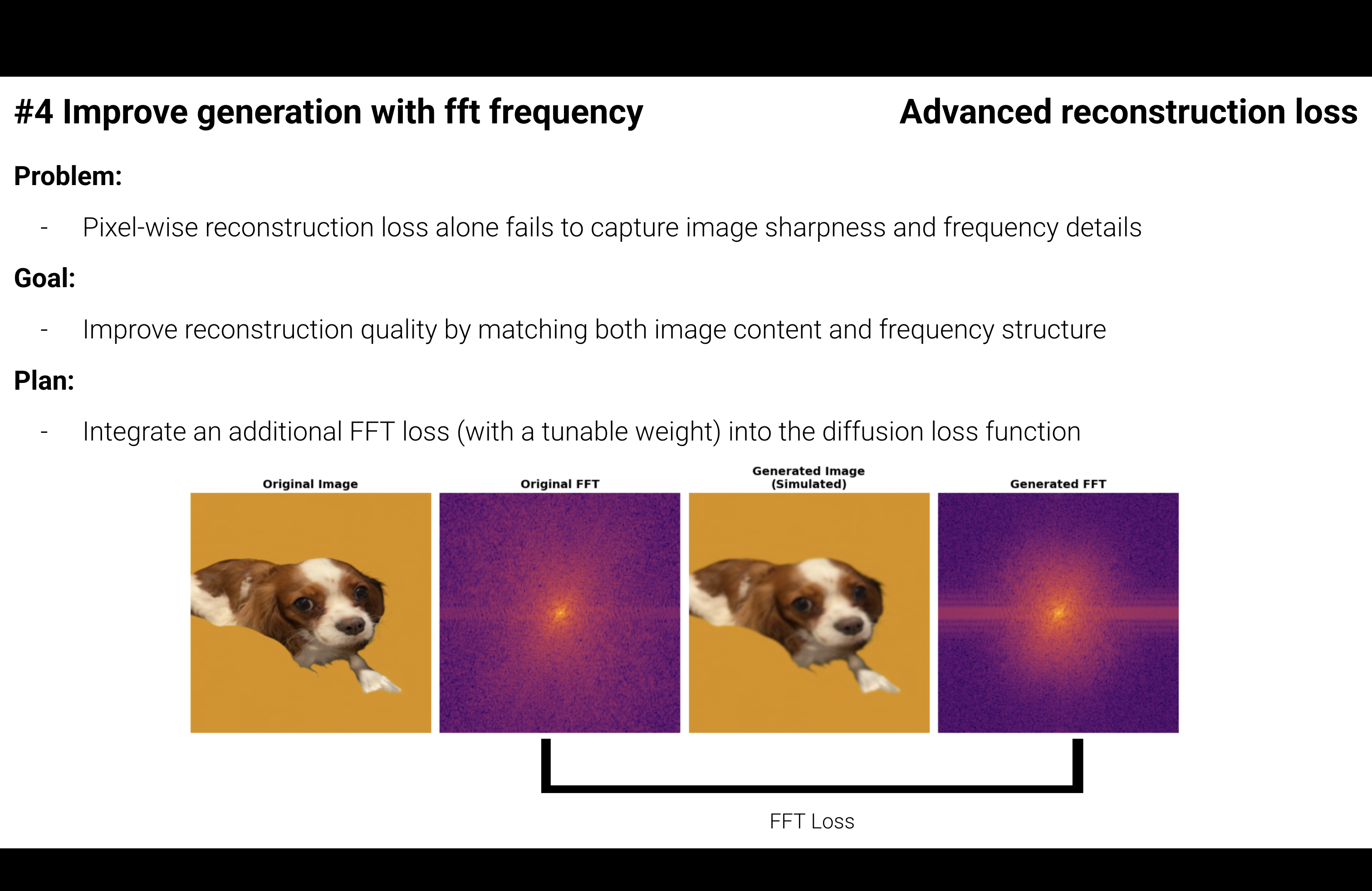Experiment: FFT Loss Integration for DreamBooth LoRA
In this experiment, I integrated an FFT (Fast Fourier Transform) loss into the fine-tuning process of a LoRA adapter for DreamBooth.
The main diffusion loss is computed in latent space, as in standard Stable Diffusion: mean squared error (MSE) between the predicted and true noise.
The FFT loss is applied in pixel space: after decoding the model’s latent outputs with a VAE, both the generated and target images are transformed into the frequency domain, and their spectral difference is penalized.
Training Objective:
At each diffusion timestep t, the model minimizes:
where:
L_diffusion — MSE between predicted and target noise in latent space;
L_FFT — L1 (or L2) distance between magnitude spectra of the decoded and target images in pixel space;
alpha — tunable FFT loss weight (typically 0 to 0.001);
z_t — latent at timestep t;
epsilon — true noise;
x_decoded — VAE-decoded prediction;
x_target — ground-truth image.
This combined loss is calculated at each diffusion step, encouraging the model to match both latent noise structure and frequency content in pixel space.
As a result, this approach helps the model better retain both low- and high-frequency characteristics of the target object, leading to improved fine details and overall structure in generated images.
FFT Loss Integration
FFT loss is computed between the frequency spectra of the original and generated images.
Figure: From left to right—Original image, its FFT spectrum, simulated generated image, and its FFT spectrum. The FFT loss is calculated between the two spectra to improve both high- and low-frequency fidelity in fine-tuning.
Visual results example
Below is a comparison of the default setup and the FFT loss integration for DreamBooth LoRA fine-tuning.
Figure: Left—Default results, Right—FFT loss integration. Zoomed crops illustrate improved detail retention and realism with FFT loss.
Results:
- Sharper high-frequency details
- Better preservation of object features
- More visually realistic outputs
- Less blur effect
Model tree for RazinAleks/stable-diffusion-xl-base-dreambooth-lora-fft-loss
Base model
stabilityai/stable-diffusion-xl-base-1.0
